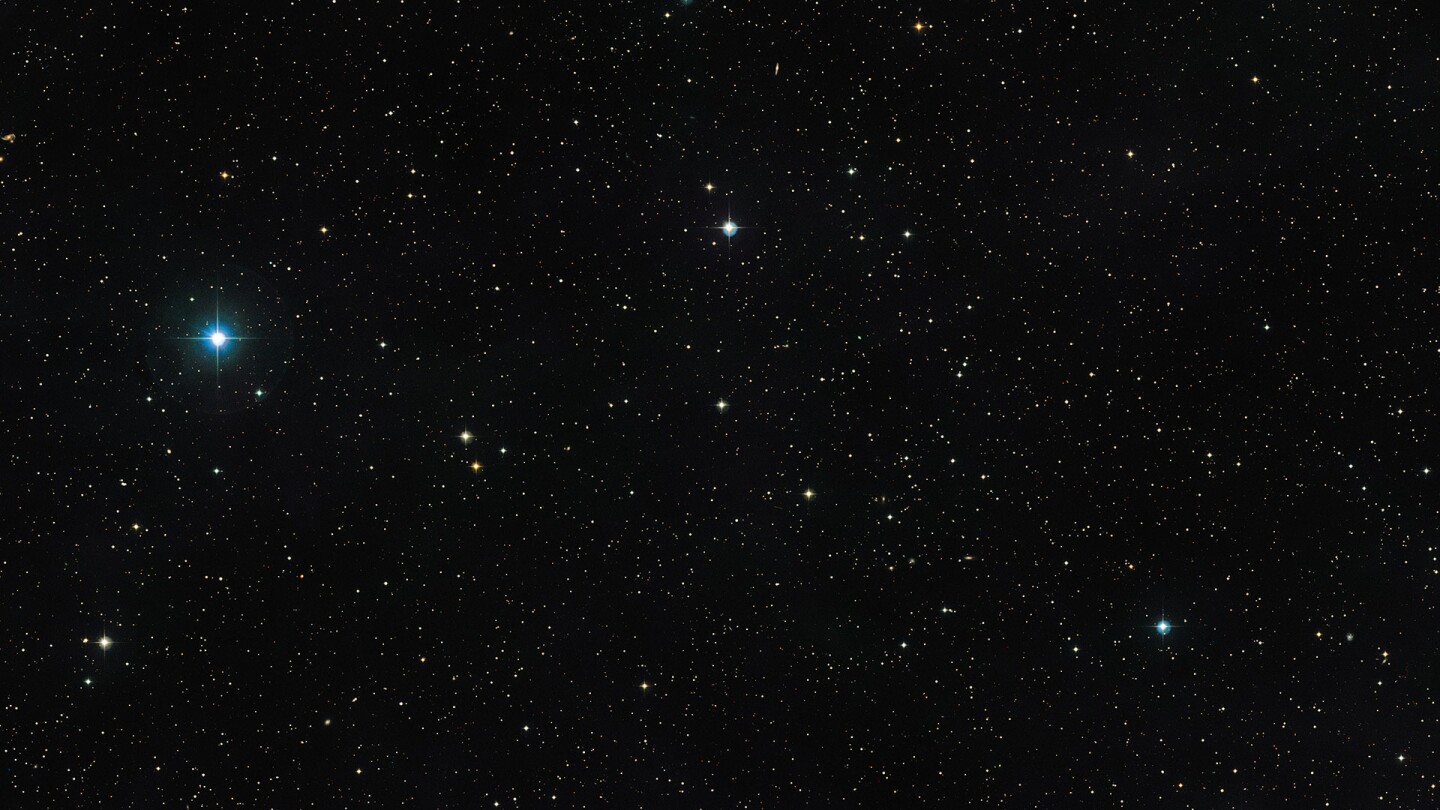The ESO has turned the Spectro-Polarimetric High-contrast Exoplanet Research instrument (SPHERE) towards an unusual double star with the expectation of finding an orbiting brown dwarf. However, the observations didn’t quite go according to plan, with the instrument – which is the latest addition to the Very Large Telescope (VLT) – coming up short. The findings have led to an ongoing re-examination of the cause of the binary stars’ unusual behaviour.
The two stars in question, known as V471 Tauri, are located some 163 light-years from Earth, and form what is known as post-common-envelope binaries. The current state of the stars, which vary in mass, is the result of the larger of the two maturing into a red giant, transferring material to its partner and enveloping it in a gaseous cloud. Upon dispersal of the cloud, the two stars – one a normal star and the other a white dwarf – moved into a much closer orbit.
Observing the stars from Earth shows fluctuations in the brightness of the pair as they eclipse one another twice in each 12-hour orbit. However, observing the objects through the ESO’s ULTRACAM system on the New Technology Telescope revealed that the the timing of the eclipses were not regular.
This was thought to be the product of an orbiting brown dwarf – an object with a mass between that of a giant planet and a small star, not quite massive enough to sustain a hydrogen fusion reaction at its core. The object was thought to be exerting a gravitational pull on the stars, disturbing their orbits.

Due to the comparative low brightness of the brown dwarf, it wasn’t previously possible to image the object. That’s where the SPHERE instrument steps in, with the ability to produce images revealing companion objects up to 70,000 times fainter than their central star.
The brown dwarf in question was expected to be much brighter than that, but pointing the SPHERE instrument at the exact spot where the team expected to find it, revealed nothing. The findings, or lack thereof, provide strong evidence against the existing hypothesis for the unusual orbits of the binaries.
In light of the study, it’s now thought possible that the irregularity may be caused by magnetic field variations in the larger of the two stars, an effect known as the Applegate mechanism.
"A study such as this has been necessary for many years, but has only become possible with the advent of powerful new instruments such as SPHERE," said team leader Adam Hardy. "This is how science works: observations with new technology can either confirm, or as in this case disprove, earlier ideas."
Source: ESO





